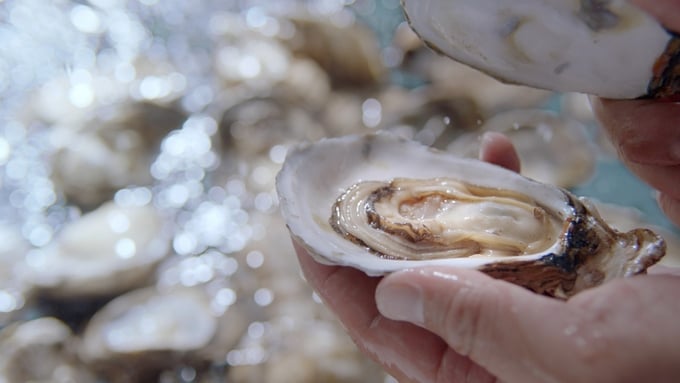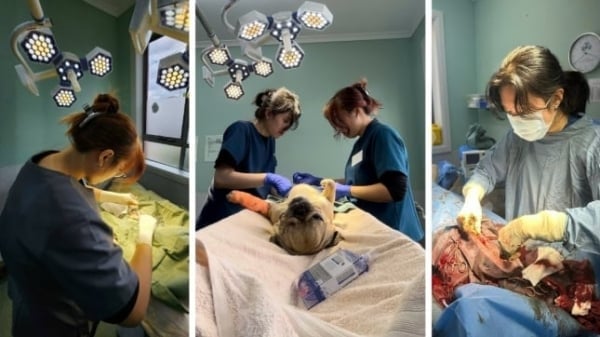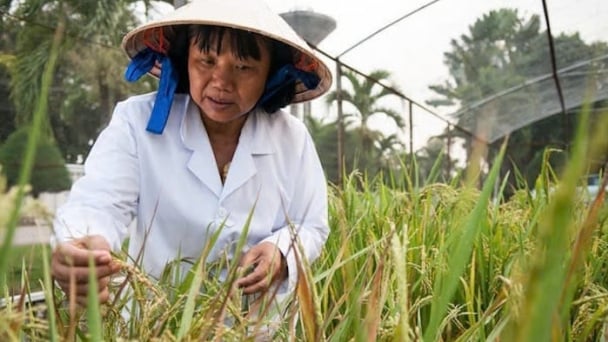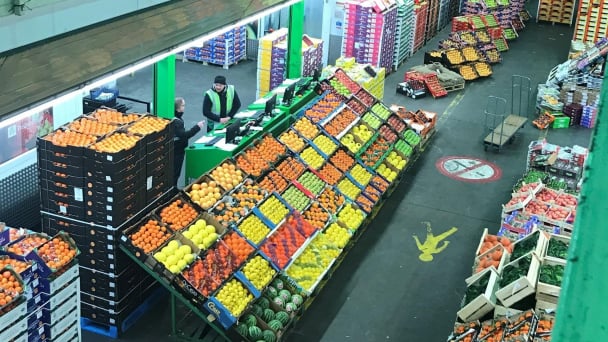May 16, 2025 | 10:37 GMT +7
May 16, 2025 | 10:37 GMT +7
Hotline: 0913.378.918
May 16, 2025 | 10:37 GMT +7
Hotline: 0913.378.918

Vietnam's seafood export turnover to China in 2024 will reach 1.9 billion USD. Photo: Hong Tham.
Rabobank Novel Sharma, a seafood expert, predicts that China will account for 40% of the global increase in seafood consumption by 2030, which represents a rise of over 5.5 million metric tons. China is the most prospective development market for seafood this decade due to its population of 1.4 billion consumers, high affinity for seafood, and economic prosperity.
Nevertheless, potential supply-side constraints, including resource scarcity, enduring environmental harm, and wage increases, may influence both domestic production and export opportunities. Given these challenges, China is expected to pursue resources beyond its borders by the end of the decade to guarantee an adequate supply and address the widening gap between demand and supply.
Volume- and value-driven growth are anticipated to fuel China's seafood demand for the decade.
“We believe that the expansion of e-commerce channels and the growth of upper-middle-class consumer groups will result in a long-term trend toward a demand for higher-value seafood.
Consequently, we anticipate that the growth of value-driven consumption will surpass that of volume-driven consumption, potentially transforming China into a USD 29 billion seafood import market by 2030, superseding the current USD 25 billion US import market", Sharman stated, adding that volume-based opportunities will continue to be substantial, with domestic producers likely to benefit due to the lower cost of domestic products and the mass market's continued price sensitivity.
China's decisions regarding seafood consumption and procurement will have a global impact as it transitions to being the primary global seafood consumer and price setter. These decisions will considerably impact the global seafood trade, which will also impact the supply dynamics and prices of the majority of premium seafood species worldwide, as well as the inputs used to produce them.
In light of these factors, China has the potential to become the most significant growth market for global seafood exporters this decade, according to the expert. It will be crucial for these exporters to closely monitor the changing dynamics of China's demand to identify potential untapped opportunities.
During the virtual conference on promoting agricultural, forestry, and fishery (AFF) exports in 2025, Mr. Nong Duc Lai, Vietnam Trade Counselor to China, highlighted that China is a significant export market for certain AFF products from Vietnam.
Regarding seafood, China is one of Vietnam's three main export markets. Vietnamese seafood exported to China includes various varieties of shrimp, pangasius, basa fish, dried fish, chilled fish, calamari, crab, surimi, and tuna.
Mr. Truong Dinh Hoe, General Secretary of the Vietnam Association of Seafood Exporters and Producers (VASEP), stated that Vietnam's seafood export turnover to China is projected to continue robust development in 2024, reaching USD 1.9 billion.
"Although there are variations in the export performance of certain products due to trade fluctuations between China and major countries — for example, Vietnam's pangasius exports to China have decreased — exports of whiteleg shrimp, lobster, crab, and snail have all risen significantly", he said. Mr. Hoe further stated that this illustrates the resilient demand in the Chinese market, which makes a substantial contribution to the USD 10 billion total export turnover of the entire seafood industry.
He also observed that the robust demand in the Chinese market, particularly for fresh and high-end products, continues to create substantial opportunities for Vietnam to export seafood to China in 2025.
"The pressure of new U.S. tariff policies and the risk of Chinese retaliation are anticipated to result in a decline in seafood trade between China and the United States soon. This presents an opportunity for Vietnam to increase its exports to China, particularly for products such as lobster, crab, snail, clam, and live seafood," Mr. Hoe predicted.
Mr. Nong Duc Lai, Vietnam's Trade Counselor in China, conducted an analysis of numerous trends in the Chinese market that are expected to emerge in the near future. He emphasized that China is prioritizing domestic demand, utilizing domestic consumption as a propelling force for economic growth by promoting the development of the domestic market and leveraging consumption to compensate for exports.
Chinese consumers, particularly those in urban areas, are increasingly emphasizing products that are of high quality, wholesome, and have evident origins.

Oysters are one of the most popular seafood in China. Photo: Hong Tham.
This has resulted in a more stringent standardization of regulations and management systems, which includes the supervision of quality, food safety, and traceability of food products in accordance with international standards. Consequently, the General Secretary of VASEP recognized that Vietnamese businesses will encounter substantial challenges, despite the substantial opportunities for seafood exports to the Chinese market.
Furthermore, the registration procedures for businesses and products that are eligible for export to China under Orders 248 and 249 of the Chinese government continue to pose a significant challenge. Moreover, exporters encounter substantial obstacles in China, as it is challenging to obtain information regarding demand and new regulations.
Mr. Lai observed that seafood and seafood products are presently among the most frequently flagged categories in the Chinese market. Incomplete certification and documentation accompanying goods, quality standards, product labeling and packaging, food additives, and expiration dates are among the reported issues.
He suggested that regulatory agencies enhance the administration and monitoring of export quality. Furthermore, it is imperative to consistently convey and update information to businesses regarding the regulations, quality standards, and food safety requirements of the importing country.
Efforts should also be made to effectively utilize cooperative mechanisms between the two countries to resolve technical barriers and difficulties. It is imperative to conduct a review of the current state of collaboration and make the necessary amendments or revisions to the existing cooperation mechanisms and agreements.
It is essential to adhere to import standards with respect to quality, packaging, traceability, and inspection and quarantine procedures. Additionally, it is imperative to prioritize the development of a brand identity. The enterprises should guarantee that their personnel possess language proficiency, market knowledge, and professional expertise that are specifically tailored to the importing country.
Mr. Lai also underscored the significance of being prepared to compete with agricultural and food products from other countries that are exported to the Chinese market.
In order to more effectively enter the Chinese market, Vietnamese seafood enterprises must improve their supply capacity through modern distribution channels, particularly e-commerce platforms, adhere carefully to export regulations, and enhance the quality of their products, according to Mr. Hoe.
Translated by Linh Linh
![Multi-channel, multi-directional Vietnamese agricultural markets: [7] Deep processing makes global reach easy](https://t.ex-cdn.com/nongnghiepmoitruong.vn/608w/files/huytd/2025/05/16/2946-che-bien-sau-chia-khoa-vang-nang-tam-nong-san-viet-tren-ban-do-the-gioi-080603_110-093858.jpg)
(VAN) The application of deep processing technology is helping Vietnamese agricultural products enhance their value, create competitive advantages, and open doors to conquer global consumers.
![Multi-channel, multi-directional Vietnamese agricultural markets: [6] Agri products go online](https://t.ex-cdn.com/nongnghiepmoitruong.vn/608w/files/content/2024/12/10/1-113313_954.jpg)
(VAN) Bringing agri products onto e-commerce platforms is an effective way to build a brand that many businesses, cooperatives, and agricultural production households are doing.

(VAN) Veterinary training should focus on quality, not just quantity. Veterinarians also need more options to pursue specialized training.

(VAN) The veterinary industry needs to be viewed objectively and further invested in to properly demonstrate its role and importance in the new context.

(VAN) The number of veterinarians graduating each year is not enough to meet actual needs, hence a difficult problem for the growing livestock industry.

(VAN) The strategic partnership between Cambodia, the Philippines, Vietnam, and CGIAR ensures that innovative solutions effectively address national priorities for food system development.

(VAN) This was affirmed by the UK Minister of State at the Department for Environment, Food and Rural Affairs during a working session with Deputy Minister Tran Thanh Nam on May 13.